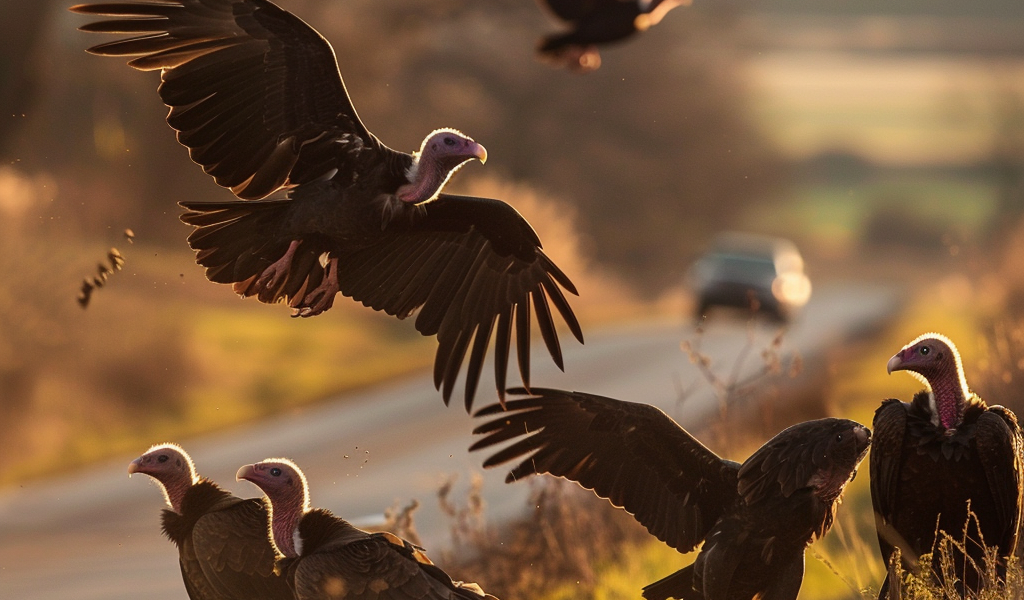Turkey vultures, often seen soaring gracefully across the sky, play a crucial role in the ecosystem as scavengers. These birds, which have become increasingly common in North America since the 1970s, are vital links in the food chain, helping to keep the environment clean by consuming carrion.
Recently, a notable encounter with a group of turkey vultures highlighted their scavenging behavior. A large mob of these birds was spotted gathering around a carcass on a rural road, demonstrating their strong attraction to decaying meat. Despite the presence of a curious observer, the vultures were initially reluctant to leave their feast, showcasing their instinctual drive to feed.
As the observer approached, the unmistakable odor of the sun-baked raccoon carcass became apparent, prompting a hasty retreat to the upwind side. The vultures, with their impressive wingspans, took to the air as a truck approached, illustrating their ability to swiftly navigate their environment in search of food.
Turkey vultures are known for their unique flight patterns. They can glide effortlessly on thermal currents, allowing them to cover vast areas in search of food without expending much energy. Their distinctive dihedral wing shape, resembling a flattened V, sets them apart from other birds of prey like eagles, which require more flapping to stay airborne.
These scavengers have adapted to their environment in remarkable ways. Unlike eagles or hawks, turkey vultures do not possess sharp talons or strong beaks designed for killing prey. Instead, they rely on their keen sense of smell, which is superior to that of many birds. Vultures can detect the scent of rotting flesh from over a mile away, enabling them to locate food sources that may be hidden from view.
Roads and railway lines are prime hunting grounds for turkey vultures, as these areas often provide fresh carrion. However, competition for food can be fierce among scavengers. Crows and ravens, for instance, are also adept at locating roadkill, which adds an element of competition for the turkey vultures.
In addition to their scavenging habits, turkey vultures have interesting social behaviors. They often gather in large groups, especially when feeding, which can create a striking visual display. Their communal feeding habits not only help them locate food more efficiently but also provide a level of protection against potential threats.
These birds are not just scavengers; they also play an essential role in the ecosystem by helping to recycle nutrients back into the soil. By consuming dead animals, turkey vultures help prevent the spread of disease and contribute to a healthier environment.
Despite their somewhat grim diet, turkey vultures are fascinating creatures that are often misunderstood. Many people may view them with disdain due to their association with death, but their ecological contributions are invaluable. As nature’s clean-up crew, they ensure that the cycle of life continues smoothly.
In recent years, researchers have taken a closer look at the behaviors and populations of turkey vultures. Studies have shown that their numbers have increased in many areas, a testament to their adaptability and resilience. This growth can be attributed to various factors, including changes in land use and the availability of food sources.
As we continue to observe these remarkable birds in their natural habitat, it is essential to appreciate their role in the ecosystem. Whether soaring high above the countryside or scavenging along the roadside, turkey vultures are a vital part of our natural world, reminding us of the intricate connections within our environment.
So next time you spot a turkey vulture gliding effortlessly overhead, take a moment to appreciate the important role they play in maintaining the balance of nature. Their presence is not just a sign of decay but a crucial element in the cycle of life that sustains our ecosystems.





